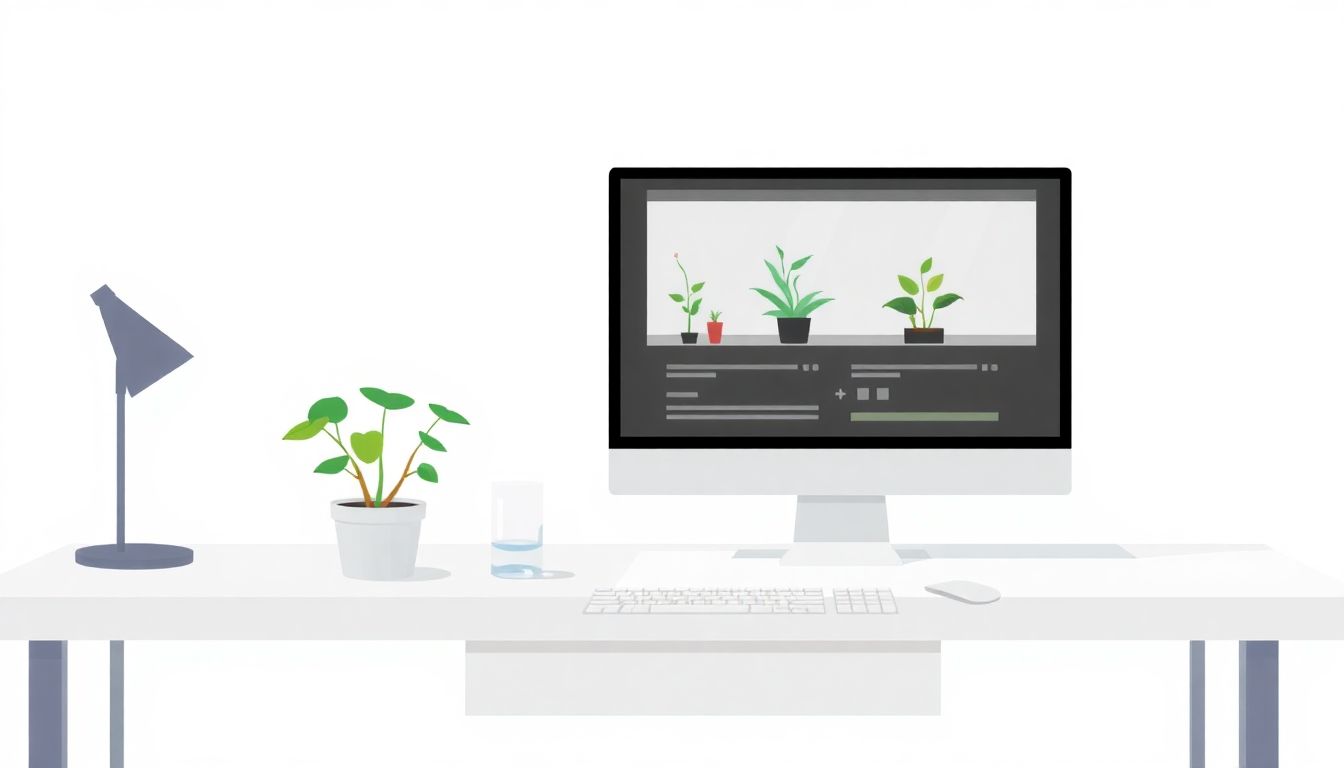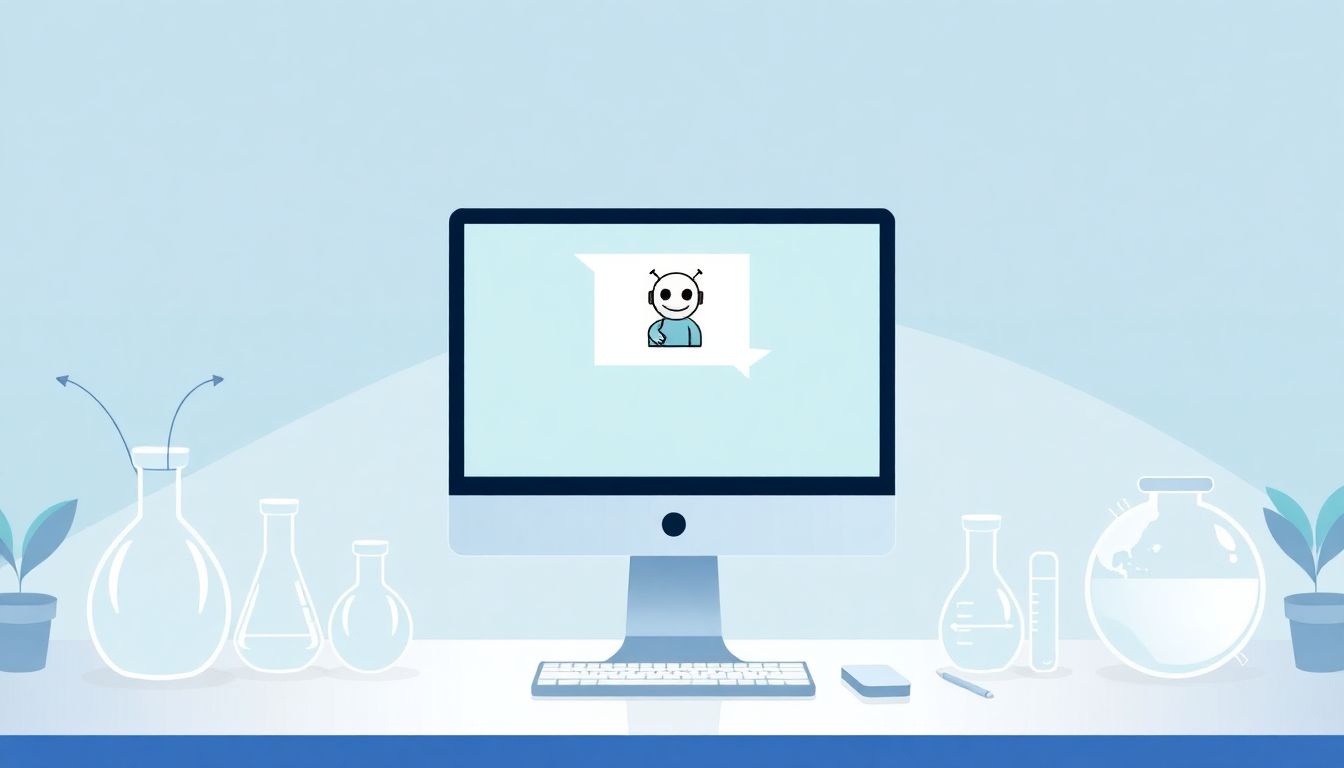Creating virtual lab experiments can be a bit overwhelming, right? With so many tools at your disposal and techniques to master, getting started might feel like trying to solve a complex equation without a calculator. If you’ve ever felt lost in the sea of possibilities, you’re definitely not alone.
But don’t worry! If you stick around, I’ll share some fantastic ChatGPT prompts that will help you design, conduct, and analyze your virtual lab experiments like a pro. You’ll see how easy and fun it can actually be to create engaging lab activities without the usual head-scratching moments.
From brainstorming creative lab environments to tackling common challenges, our guide will walk you through everything you need to know. Let’s dive in and unlock the potential of ChatGPT for your lab experiments together!
Key Takeaways
- Use tailored ChatGPT prompts to simplify designing and conducting virtual lab experiments.
- Specific prompts can help brainstorm lab ideas, outline procedures, and identify required materials.
- Engage students actively by involving them in the design and execution of experiments.
- Utilize prompts for analyzing data to draw meaningful insights and foster deeper understanding.
- Address common challenges in virtual labs with practical solutions suggested by ChatGPT.
- Improve experiments by creating immersive lab environments and fostering class discussions.

Best ChatGPT Prompts for Virtual Lab Experiments
If you want to harness the power of ChatGPT for virtual lab experiments, using tailored prompts can significantly streamline your workflow and enhance your educational experience. Here are some powerful prompts you can copy and paste directly into ChatGPT:
- “List five engaging virtual lab experiments suitable for high school biology students.”
- “Generate a step-by-step guide on how to conduct a virtual chemistry titration experiment.”
- “What materials would I need to simulate a physics experiment on projectile motion using virtual tools?”
- “Provide an outline for a virtual lab focused on genetics and heredity.”
- “Suggest three innovative ways to use ChatGPT in a virtual lab setting for introductory physics.”
These prompts facilitate a smooth start by focusing on engaging topics while providing the essential details necessary for effective virtual experimentation.
How to Use ChatGPT for Designing Virtual Lab Experiments
Designing virtual lab experiments with ChatGPT can make the process easier and more interactive. Start by defining the subject matter and objectives of the lab to tailor ChatGPT’s suggestions accordingly. Use prompts like:
- “Design a virtual lab for exploring photosynthesis in plants, including setup and procedures.”
- “Outline the key concepts to teach in a virtual physics lab about Newton’s laws of motion.”
- “Create a lesson plan for a virtual lab on chemical reactions, detailing the required materials and methods.”
- “What are the best practices for integrating AI into virtual science experiments?”
Engaging with ChatGPT in this way not only builds a structured approach to experiments but invites students to participate more actively in their learning.
Step-by-Step Prompts for Conducting Virtual Lab Experiments
To effectively conduct virtual lab experiments, you can utilize specific prompts that walk you through the process step by step. Here are a few you might find useful:
- “Explain how to set up a virtual lab for studying the principles of diffusion.”
- “Guide me through the process of conducting a virtual experiment on the effect of temperature on enzyme activity.”
- “What are the key steps in simulating an acid-base titration using an online platform?”
- “Provide a real-time checklist for executing a virtual experiment on circuit theory.”
These structured prompts ensure a thorough and organized approach to executing experiments, helping students stay engaged and focused.
Prompts for Analyzing Data from Virtual Lab Experiments
Once your virtual lab experiments are complete, analyzing the data is crucial for drawing meaningful conclusions. Here are some valuable prompts to guide your analysis:
- “Show me how to graph data collected from a virtual physics experiment on velocity.”
- “What statistical methods can I use to interpret results from a virtual chemistry experiment?”
- “Summarize the findings from an online lab experiment about osmosis and its impact on plant cells.”
- “Help me write a report analyzing the data from a virtual biology experiment on bacterial growth rates.”
Utilizing these prompts will assist in transforming raw data into insights, fostering deeper understanding among students.

Creative Prompts for Simulating Lab Environments with ChatGPT
Simulating lab environments is a fun way to immerse students in scientific concepts. You can ask ChatGPT to create scenarios that mimic real-world lab settings. Here’s a list of creative prompts you can use:
- “Generate a virtual lab environment for a biology experiment on plant growth under different light conditions.”
- “Simulate a chemistry lab focused on acid-base reactions, including necessary materials and safety precautions.”
- “Create a virtual physics lab that demonstrates the principles of electromagnetism through interactive simulations.”
- “Design a computer-generated lab scenario where students can explore human anatomy using 3D models and interactive elements.”
These prompts help create engaging and authentic experiences, turning a simple virtual lab into a laboratory of discovery.
Tips for Improving Your Virtual Lab Experiments with ChatGPT
Improving virtual lab experiments can enhance understanding and engagement. Here are actionable tips to make the most of ChatGPT’s capabilities:
- “Identify common misconceptions in a specific science topic and ask ChatGPT to provide clear explanations.”
- “Request a list of interactive questions related to your virtual lab experiment to foster class discussions.”
- “Ask ChatGPT for alternative methods or modifications to enhance experimental procedures for diverse learners.”
- “Utilize ChatGPT to create a post-experiment survey for students to reflect on their learning experience.”
By leveraging these tips, you can create a more inclusive and dynamic virtual lab experience that enriches student learning.
Common Challenges in Virtual Lab Experiments and How to Address Them with ChatGPT
Experiments can come with a fair share of challenges. Understanding these hurdles is crucial, and ChatGPT can be a handy tool for finding solutions. Here’s how to tackle some common issues:
- “List common technical issues students face when using virtual lab platforms and solutions to fix them.”
- “Inquire about ways to engage students who find it hard to concentrate during virtual experiments.”
- “Ask for advice on how to manage time effectively in a virtual lab setting to maximize learning outcomes.”
- “Get strategies from ChatGPT to help students analyze data and results when they are struggling to draw conclusions.”
By addressing these challenges with practical solutions, you can enhance the effectiveness of your virtual lab sessions.

FAQs about Using ChatGPT for Virtual Lab Experiments
Using ChatGPT for virtual lab experiments can raise several questions. Here are some common FAQs along with their answers to help you get started.
1. Can ChatGPT guide me through different science experiments? Yes! You can input specific prompts to get step-by-step guidance on various experiments. For example, use the prompt: “Guide me through the process of a virtual lab experiment on electrolysis.”
2. Is ChatGPT suitable for all educational levels? Absolutely! Formulate prompts tailored to different age groups or expertise levels. For instance: “List age-appropriate virtual lab experiments for middle school science classes.”
3. How can I ensure the accuracy of the information provided by ChatGPT? While ChatGPT can provide valuable insights, it’s always good practice to cross-reference information with reliable sources. You can also ask it to provide references: “What sources support the experiment design for studying chemical reactions?”
4. Can ChatGPT help with creating assessments or quizzes based on virtual lab experiments? Yes! You can ask for quiz questions to assess understanding. Try: “Create a short quiz for students after conducting a virtual physics experiment.”
5. How can I enhance student engagement using ChatGPT in virtual labs? Ask for interactive prompts. For example: “Suggest ways to make a virtual lab on ecosystems more interactive for students.”
By using these FAQs and prompts, you can navigate your way through using ChatGPT more effectively and enhance the overall virtual lab experience for your students.
FAQs
You can conduct experiments across various fields, such as chemistry, biology, physics, and engineering. ChatGPT can assist in designing simulations, analyzing data, and creating interactive lab experiences tailored to your specific research goals.
To improve accuracy, ensure that your prompts are clear and specific. Use relevant data and incorporate various experimental parameters. Additionally, verify results through replication and cross-analysis for more reliable outcomes.
Yes, ChatGPT can assist in troubleshooting by suggesting potential solutions, identifying common issues, and providing guidance on modifying experimental setups. It can also help you review data and improve your experimental design.
Creative prompts might include scenarios like “simulate a chemical reaction in a zero-gravity environment” or “create a virtual ecosystem with varying climatic conditions.” These encourage innovative thinking and immersive simulations.
